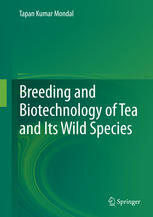

Most ebook files are in PDF format, so you can easily read them using various software such as Foxit Reader or directly on the Google Chrome browser.
Some ebook files are released by publishers in other formats such as .awz, .mobi, .epub, .fb2, etc. You may need to install specific software to read these formats on mobile/PC, such as Calibre.
Please read the tutorial at this link: https://ebookbell.com/faq
We offer FREE conversion to the popular formats you request; however, this may take some time. Therefore, right after payment, please email us, and we will try to provide the service as quickly as possible.
For some exceptional file formats or broken links (if any), please refrain from opening any disputes. Instead, email us first, and we will try to assist within a maximum of 6 hours.
EbookBell Team

4.7
46 reviewsTea is an important non-alcoholic beverage plant of the world. Cultivation of tea is very important as it earns revenue for the tea growing nations especially the developing countries such as India. Although conventional breeding is well-established and has contributed significantly for varietal improvement of this plant and other Camellia species with ornamental value, yet applications of biotechnology are required to intervene some of the issues where conventional breeding is restricted particularly for woody plants such as tea. It is note-worthy to mention that some amounts of biotechnology works in several facets of tea and its wild species have also been done. In the present book, a state-of-the-art on various aspects of breeding and biotechnology has been complied in eight chapters. They are: i) Origin and descriptions of health benefits as well as morphological classification as first chapter, ii) Breeding and cytogenetics that comprise with various conventional approaches of varietal improvement of tea along with their genetic resources, iii) Micropropagation which deals with in-depth study of clonal propagation, iv) Somatic embryogenesis along with alternative techniques such as suspension culture, cry-preservation etc. v) Molecular breeding that deals with application of various DNA-based markers, linkage map etc., vi) Genetic transformation and associated factors, vii) Stress physiology complied with various works done in tea along with its wild relatives on abiotic as well as biotic stress, and viii) Functional genomics that describe the various works of molecular cloning and characterizations, differential gene expression, high-throughput sequencing, bioinformatics etc. Importantly, the author has made exclusive tables in most of the chapters that include the summary of the works in particular topic. In a nutshell, the book compiles the work already been done, identifies the problems, analyzes the gaps on breeding and biotechnological works of tea as well as its wild species and discusses the future scope as conclusion. Every effort has been made to include all the published works till June 2013. The book will be a useful resource for post-graduate, doctoral as well post-doctoral students working on tea as well as other woody plants. This will also be useful for the scientists working in the areas of life sciences, genomics, biotechnology and molecular biology.